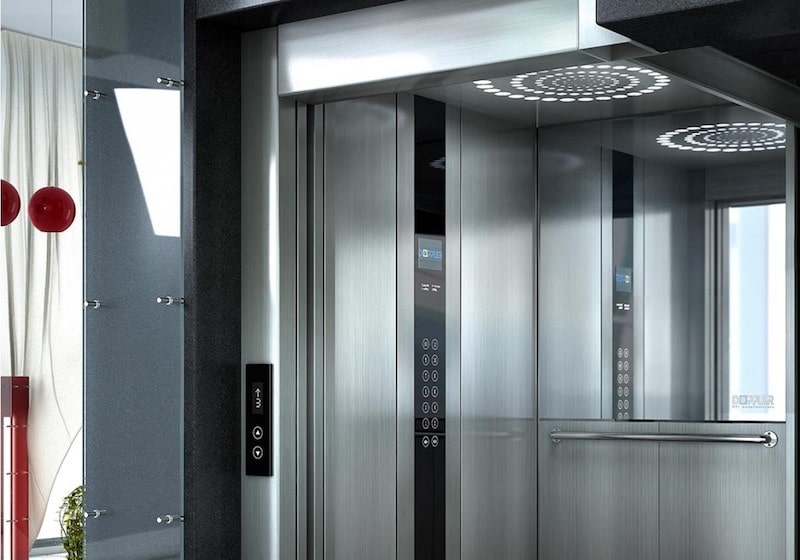Exploring the World of Elevators: Common Concerns Encountered by Different Lift Mechanisms
As we navigate with the vertical transport systems of modern buildings, lifts stand out as an essential component of our everyday lives. From hydraulic lifts to grip systems and machine-room-less layouts, each lift kind comes with its collection of usual concerns.
Hydraulic Elevators
Hydraulic lifts, often chosen for low-rise structures, use fluid pressure to manage the movement of the lift car (lift repair companies). This system includes a hydraulic pump pressing oil right into a cyndrical tube, creating the elevator to relocate in the preferred instructions. While hydraulic elevators are understood for their quiet and smooth procedure, they do include their very own collection of typical problems
One widespread issue with hydraulic lifts is oil leak. The seals in the hydraulic system can break over time, resulting in oil seepage. If left unaddressed, this not just produces a mess however can additionally impact the elevator's performance. Additionally, concerns with the control system, such as defective valves or a malfunctioning pump, can trigger interruptions in the elevator's movement.
Regular upkeep and punctual repair services are necessary to make sure the smooth functioning of hydraulic lifts. By attending to these common problems proactively, building proprietors can lessen downtime and ensure the security and effectiveness of their vertical transport system.
Grip Elevators
When thinking about vertical transport systems in buildings, an additional typical type in addition to hydraulic elevators is the traction lift. Traction elevators run utilizing a system of ropes and counterweights that relocate the elevator car by clutching onto the hoist ropes. This mechanism enables smoother and quicker vertical transport compared to hydraulic systems.
One of the typical problems encountered by traction lifts is rope wear. The constant movement of the ropes within the grip system can bring about tear and put on gradually, possibly creating the lift to breakdown or come to be dangerous for use. Regular assessments and maintenance of the ropes are important to make sure the lift's appropriate performance and safety and security.
Another issue that grip lifts may come across is related to the control system. Issues with the control system can bring about issues such as unpredictable activity, delays in action times, or even complete shutdowns. Routine testing and maintenance of the control system are essential to avoid such concerns and ensure the elevator's dependability.
Machine-Room-Less (MRL) Lifts

Among the crucial parts of MRL lifts is the compact gearless grip device that is installed within the hoistway. This maker efficiently drives the lift car without the demand for large equipment found in typical traction lifts. Furthermore, MRL lifts usually use a weight system to balance the auto, further boosting their energy effectiveness.
Despite their advantages, MRL lifts might encounter challenges associated with maintenance and repair work because of the confined area for tools setup. Ease of access for servicing elements within the shaft can be restricted, calling for specialized training for professionals. Proper maintenance schedules and routine examinations are important to make sure the ongoing smooth procedure of MRL lifts.
Overloading and Weight Limitation Issues
Overwhelming and weight restriction problems are crucial problems in lift procedures. Elevator manufacturers layout raises with details weight Related Site capacities to guarantee guest safety and security and tools long life.
When elevators are overwhelmed, it places excessive pressure on the motor, cords, and other components, possibly triggering malfunctions or breakdowns. If they discover excess weight, security mechanisms such as sensing units and overload sensors are in area to stop elevators from moving. Additionally, surpassing weight limits can lead to boosted energy usage and wear and tear on the lift system.
To mitigate straining problems, developing managers must plainly show weight restrictions in elevators and inform occupants on the significance of sticking to these restrictions - lift repair companies. Routine upkeep checks by qualified specialists can additionally help ensure that lifts are operating within safe weight criteria. By addressing overloading and weight limitation concerns proactively, building owners can improve lift safety and effectiveness
Electric System Failings
Going beyond weight limits in elevators can not just cause mechanical issues however also potentially add to electrical system failings within the lift facilities. Electric system failures are an important concern in elevator operation, as they can create unforeseen shutdowns, breakdowns, and even safety risks. One usual electrical concern is the getting too hot of components because of excessive existing More Bonuses circulation brought on by overwhelming the lift beyond its ability. This can lead to harm to the wiring, motor, or control systems, causing pricey repairs and downtime.
Routine upkeep and inspections are vital to recognize and resolve prospective electrical issues quickly, guaranteeing the secure and reliable operation of lift systems. By adhering to weight limits and conducting routine electrical system checks, structure proprietors can reduce the risk of electric failures in lifts.
Final Thought

Hydraulic lifts, commonly chosen for low-rise structures, utilize fluid stress to control the motion of the lift vehicle.When taking into consideration vertical transport systems in structures, one more typical type apart from hydraulic lifts is the grip elevator. Grip lifts Recommended Reading operate making use of a system of ropes and counterweights that relocate the lift vehicle by clutching onto the hoist ropes. Unlike conventional lifts that require a separate machine room to house the devices, MRL elevators integrate many of the elements within the shaft, removing the need for a committed machine space.In verdict, lifts face typical issues such as hydraulic malfunctions, traction system failings, and electric system problems.
Comments on “We Maintain Lifts with Precision: Ensuring Safety And Security and Performance”